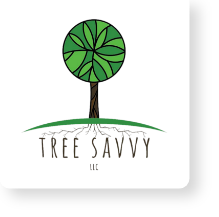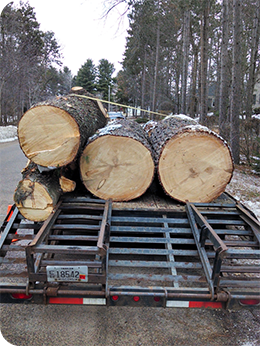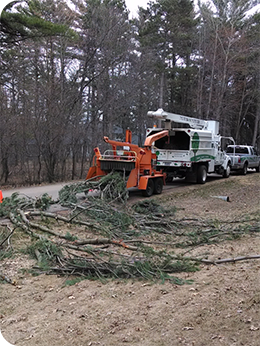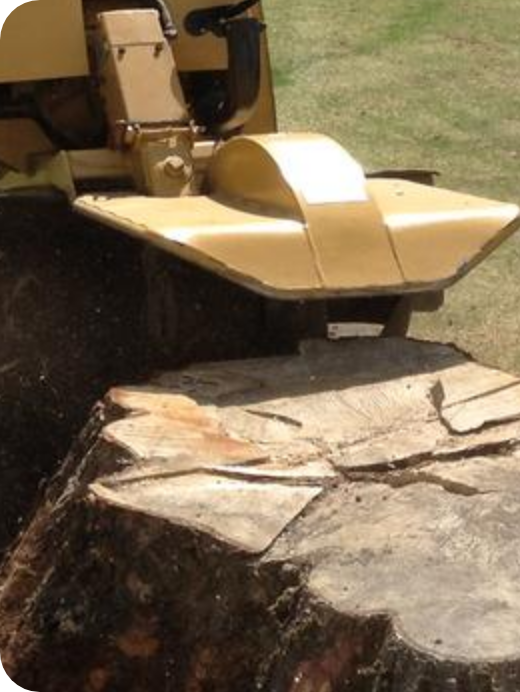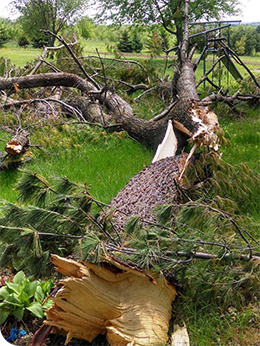Stake & Strap
At the time of planting, conventional nursery stock (ball & burlap, container grown, and bare root) lacks sufficient rooting and requires additional support. Large, dense crowns, poor root structure in the form of circling roots, and the exposure to high winds also warrant the use of a support system to prevent uprooting.
The use of a support system in the form of t-posts and rope or webbing should allow the movement of the tree to aid in the establishment of structural roots. The supporting posts should be placed far enough away from the tree to prohibit contact between the tree and posts in windy conditions with connecting ropes or webbing placed 2/3rds up the stem of the tree.
Any rope or webbing that is connected to the trees should be secured in a manner that protects the soft trunk tissues. Tree Savvy recommends regularly inspecting and adjusting the ropes or webbing to ensure the tree does not begin to girdle or envelop the material. If the posts and rope or webbing is left overtime, the tree’s trunk, branches, and roots will begin to grow around the material, slowly choking off its vascular tissues leading to premature decline.
Depending on the tree’s species, health, vigor, and growing conditions, it is recommended to remove the posts and guying material after two years or until sufficient rooting is established.
